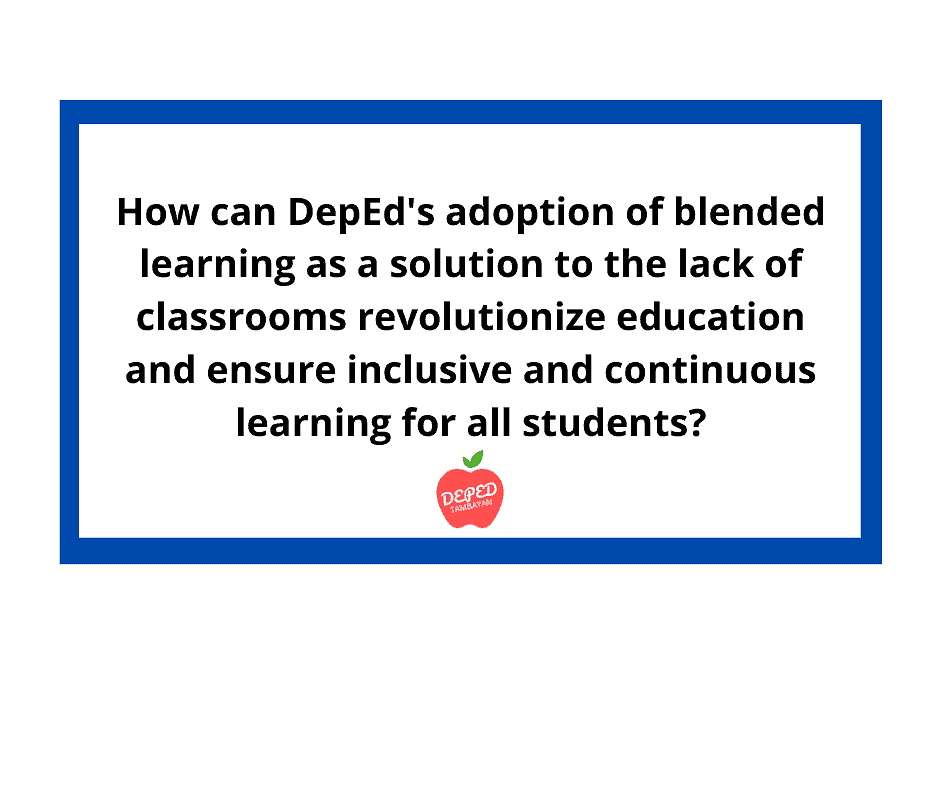The Department of Education (DepEd) in the Philippines has faced numerous challenges in providing quality education to all students, especially in the face of the COVID-19 pandemic. One significant obstacle that the DepEd has grappled with is the need for classrooms and physical infrastructure, making it difficult to accommodate the growing number of students. DepEd has turned to blended learning as a potential solution to this problem.
Blended learning has gained traction worldwide due to its flexibility and adaptability. By leveraging technology and digital platforms, students can access educational materials and engage in interactive learning experiences. Blended learning allows for personalized learning, as students can progress at their own pace and revisit concepts as needed.
Blended learning combines traditional instruction with online activities for a dynamic learning experience that caters to individual needs. Educators can provide a well-rounded education with confidence.
It also encourages the development of digital literacy skills, which are becoming increasingly important in today’s technologically driven world.

The DepEd’s emphasis on blended learning as a solution to the lack of classrooms is commendable. It recognizes the need for innovative solutions in providing education to all students, regardless of their geographical location or the availability of physical classrooms. By embracing blended learning, DepEd can reach a wider audience of learners and ensure that infrastructure limitations support education.
Read more: Education Workers Calls for Expedited Release of Rice Allowance for Teachers
Acknowledging the challenges that come with implementing blended learning effectively is crucial. One of the main concerns is the accessibility and availability of technology, especially in remote and underserved areas. Ensuring that students have access to devices such as laptops or tablets internet is crucial for the success of blended learning initiatives. The DepEd must work closely with local governments, stakeholders, and private organizations to bridge the digital divide and provide necessary resources to students who may otherwise be left behind.
DepEd must also invest in comprehensive teacher training programs to equip educators with the skills and knowledge required for effective blended learning instruction. Teachers’ professional development should be prioritized to ensure they can navigate digital platforms, create engaging online content, and provide adequate support to students in a blended learning environment.

Blended learning should be seen as a supplement to traditional face-to-face instruction rather than a complementary approach. There are undeniable benefits to in-person interaction, socialization, and hands-on learning experiences that cannot be fully replicated in an online setting. Therefore, DepEd should strive to balance blended learning and physical classroom instruction to provide a well-rounded education to students.
Final Thought
The Department of Education in the Philippines’ focus on blended learning as a solution to the lack of classrooms is a step in the right direction. It demonstrates adaptability and a commitment to leveraging technology for the benefit of students.
However, the successful implementation of blended learning relies on addressing challenges such as technology accessibility and teacher training. With careful planning, collaboration, and continuous evaluation, blended learning can bridge educational gaps and provide equitable access to quality education for all Filipino students, regardless of physical infrastructure limitations.
Related: DepEd starts early registration for SY 2023-2024
SIGN UP TO DEPED TAMBAYAN NEWSLETTER
Join our Facebook Community and meet with fellow educators. Share and download teaching materials. Get important updates and read inspiring stories.


